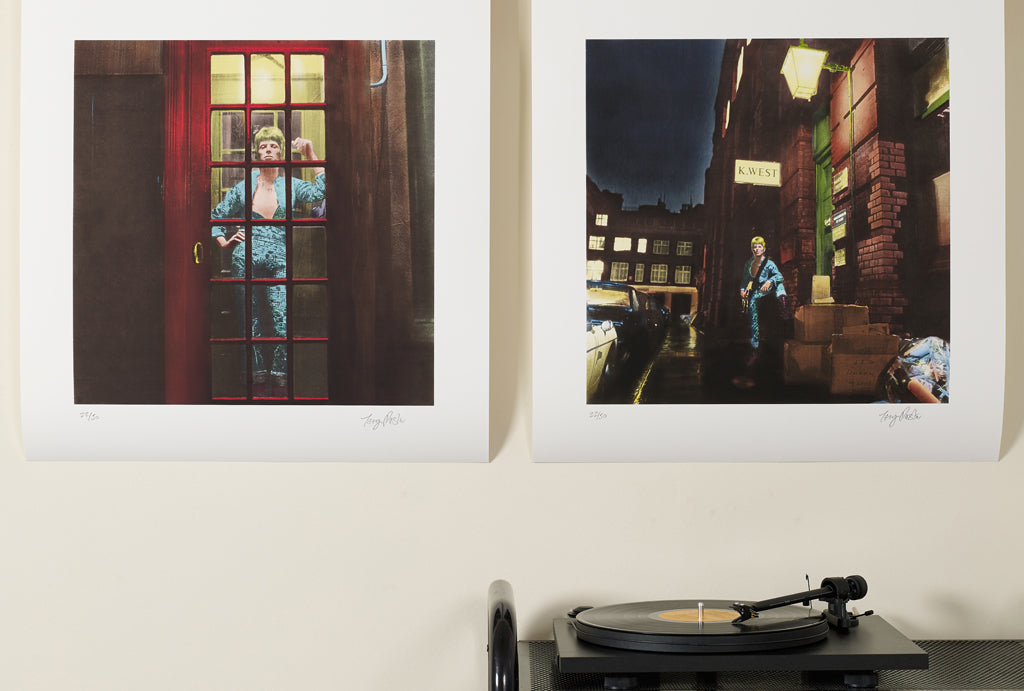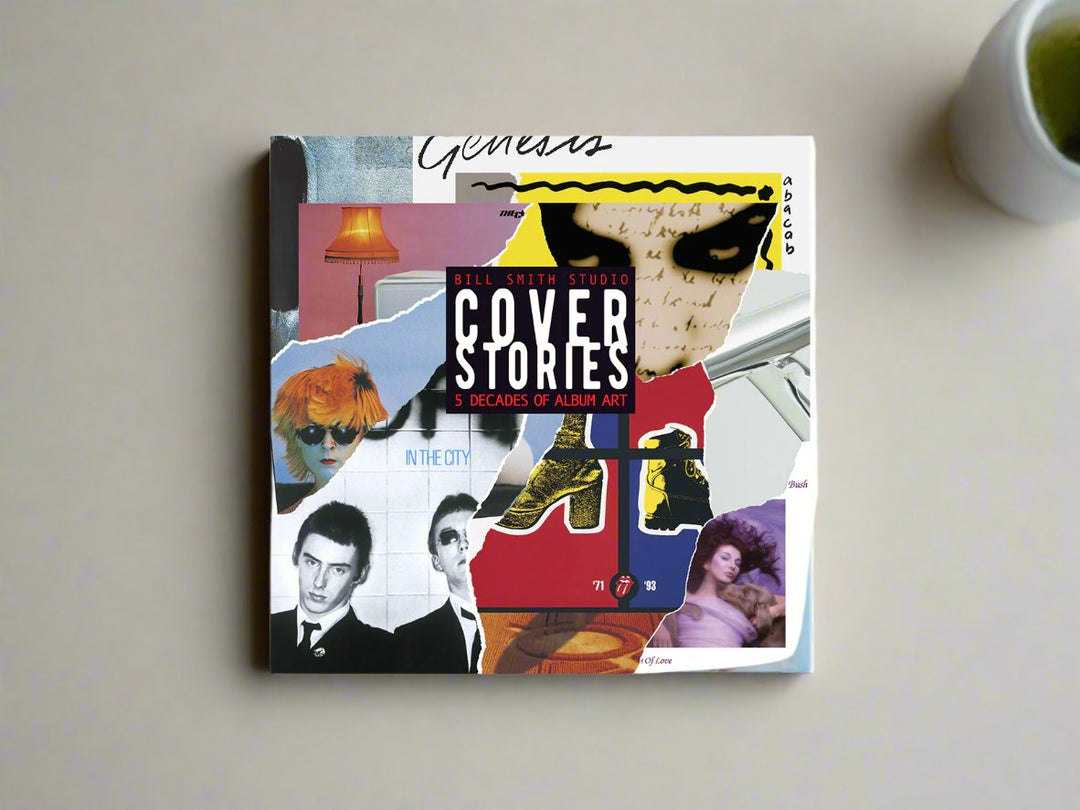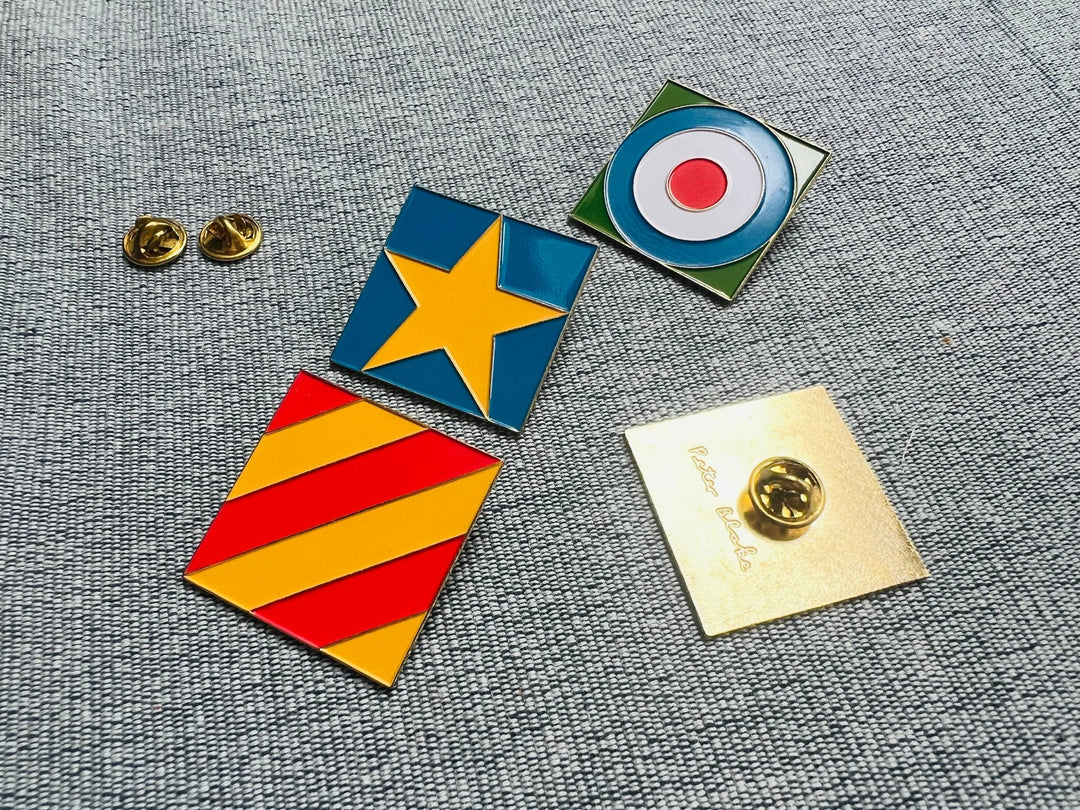From album covers to sci-fi books, advertising imagery, to technical drawing, fine art to photography, Terry Pastor has done it all.
Since the 1970s the self-taught graphic artist has worked for clients all across the world, creating iconic imagery with masterful flourishes of his airbrush. But he’s best known for two images in particular, that jump-started the career of a young David Bowie. Hunky Dory and Ziggy Stardust turned Bowie into a rock legend, catapulting him to stratospheric levels of global fame. For Terry the story was somewhat different.

November 2016
How did you get your career off the ground?
Terry Pastor: I'm self taught. I missed out a lot of school, which I don't regret, but it would have been nice. I had a lot of friends that were at Central in London, but I left school at 15 and started working at a commercial art studio in Fleet Street, in London. 1962 I think that was.
Did you make a conscious decision not to go?
Terry: I think it was just that my regular school was completely hung up on things like being good at maths. Maths was a big deal and I was terrible at it—pretty reasonable or good at everything else, but maths just left me cold. I was good at art, and a parent of a friend of mine was very successful and ran an art studio. He took me under his wing and trained me up a little bit; he went to the school and saw the headmaster and said, “I think Terry's got a talent as an artist. I think he needs extra art tuition.” They said, “No chance of that.” It was a dead end there.
“I saw these airbrushes and I knew I had to get some of those. The airbrush became the main technique in my work as an illustrator for a long time.”
Working in this art studio I came across tricks of the trade, which you would never have been taught otherwise. I was stuck in the retouching studio which was the only part of the studio complex that was vaguely creative. I saw these airbrushes and I knew I had to get some of those. The airbrush became the main technique in my work as an illustrator for a long time.
What kind of work was being produced at the studio? What sort of things were you involved in the early days?
Terry: Not very much. I was mostly a tea boy. I did do a little bit of retouching on photographs and stuff, but they didn’t really do illustration as such. Anyway I was far too young and inexperienced to do anything proper at the time. I was there for about three years, but I didn't really fit in. I had long hair and looked a bit like a Rolling Stones clone. Then one day they just sacked me out of the blue. One Friday it was; “Here’s three weeks wages, don't come back.”
That's pretty brutal.
Terry: It didn’t really worry me because I didn't really like it there very much. It was probably the best thing that ever happened to me. If they hadn’t gotten rid of me I'd have stayed there forever and not done anything in particular.
Where did you go after that?
Terry: I left there and luckily my mum supported me for several years. I found a local art gallery in Croydon and just painted stuff for them—mostly surreal, abstract, weird stuff. I vaguely survived on that, but by about 1970 I thought I’ve really got to make some money here because I’m starving to death.
I found a commercial art agent and went to see him, but it was a typical catch 22 situation. He said, “You haven’t got anything published. Come back when you've got something published and I’ll have another look.” That was that. Then he phoned me up a couple of weeks later and said, “I’ve got this guy wants this poster done for a rock band called Stray. It’s just a black and white thing, but go down and see him. Just tell him that your portfolio’s in Paris so you haven’t got anything to show him, but you can do the job.” I just blagged my way through it and got the job. Did it and they loved it, this agent took me on, and that was the start of getting commercial illustration work.
Were most of the early projects for music?
Terry: No, not really. I did do quite a few Elton John covers, but it varied from hard-nosed advertising to album covers, book jackets, publishing works, and magazines. I did a lot of work for the girly mags—Men Only, and Mayfair Magazine, which were popular at the time. They were really good for illustrating their stories and there was no real art direction. They just wanted something that vaguely fit in with the story.
That kind of thing doesn’t exist anymore. Those sorts of magazines don’t work with that level of editorial as well as naked women—I think now it's just all naked women. I did some work occasionally for Playboy, and at the time they were renowned for their journalism believe it or not. They used to win a lot of awards for journalistic stuff.
Were you working on quite erotic imagery for them?
Terry: It was erotic I suppose, but there was this weird thing with publishing in those sort of magazines. They could show photographs of naked women but if you drew them you had to make them quite coy, because the law was such that for some reason photographs were okay but paintings or illustrations of this sort of thing weren't. I never could quite understand that.
That's so bizarre.
Terry: That was the way it was. I used to do a lot of stuff of girls in black leather and bondage—psycho-sexual imagery—which was fun to do because you could be very creative. But you had to draw a line at a certain point or you'd get the censor saying you couldn’t publish it.
So on one hand you’ve got the censors trying to stop you making certain work, and on the other, musicians saying do whatever the hell you want…
Terry: Yeah, musicians were very undisciplined people in that period. I think in the 60s and 70s the whole culture of the music industry was one of “Let's just do it!” That worked great obviously because a lot of the music of the 60s and the early 70s was really good. Whereas now I think you look at a lot of music and it's all controlled by accountants and people asking if it’s going to make money. You only do it if it makes money. I think that's why there's not a lot of good music around now. Not on mainstream radio. It doesn't get any play because it's not commercial enough. But maybe I'm just getting old. I don't know.
There was bad music around in the 60s and 70s, don’t get me wrong. If you look at the charts in that era, a lot of it was terrible, but between the lines of that most bands in that period were into making albums, and the albums were great. The whole thing of the concept album and things like Dark Side of the Moon—they were albums where every track was good. You didn't necessarily pick the track and say that's going to be the single, whereas now it's more singles market I guess. Hunky Dory and Ziggy Stardust by Bowie were both very strong. All the tracks were pretty good. There wasn't really a weak track on either of those LPs.
“You've got to remember that at the time I was doing Hunky Dory and Ziggy Stardust David Bowie wasn't a star.”
Did that give you a sense of pride when you were making the artwork?
Terry: I don't know. You've got to remember that at the time I was doing Hunky Dory and Ziggy Stardust, David Bowie wasn't a star. He was just breaking through then. It was only a few months after the release of Ziggy Stardust he really became a megastar. I remember him saying that Hunky Dory didn't sell well, and he was quite concerned about what was going to happen to his career. Then of course Ziggy came out and that changed everything, and after that Hunky Dory sold well too.
Were you working with him closely through that or was it quite a disconnected process?
Terry: I talked to him here and there over a couple of years or so. He would drop into the studio or we would have a drink in the pub next door where at that time he would go completely unnoticed. After his success, and then with Aladdin Sane I should imagine there was more input from him then. By then he realised that he had a good career and he had to control it more.
It seems weird to look back on the album now that it’s so ingrained in pop culture, and imagine you both worrying whether it would do well…
Terry: If someone had said to me then that it was going to be a really major record, and also an iconic image I would have said no, you’re kidding. I know I never put either of those covers in my portfolio.
Really?
Terry: Yeah. I never considered them particularly representative of my work. I thought they were good but most of my work was pure illustration with the airbrush, and these were cut-out photographs. I didn't want to get involved too much in doing that sort of work. Interestingly I've never been offered work like that since.
You'd think people would be saying, that guy did those covers that were lovely let's get him to do a cover for us; but I've never been asked to do anything similar as far as colouring up photographs for LPs. I've been asked to do full artwork, but not a Hunky Dory or a Ziggy Stardust. They were one-offs.
“I've never been asked to do anything similar as far as colouring up photographs for LPs. I've been asked to do full artwork, but not a Hunky Dory or a Ziggy Stardust. They were one-offs.”






